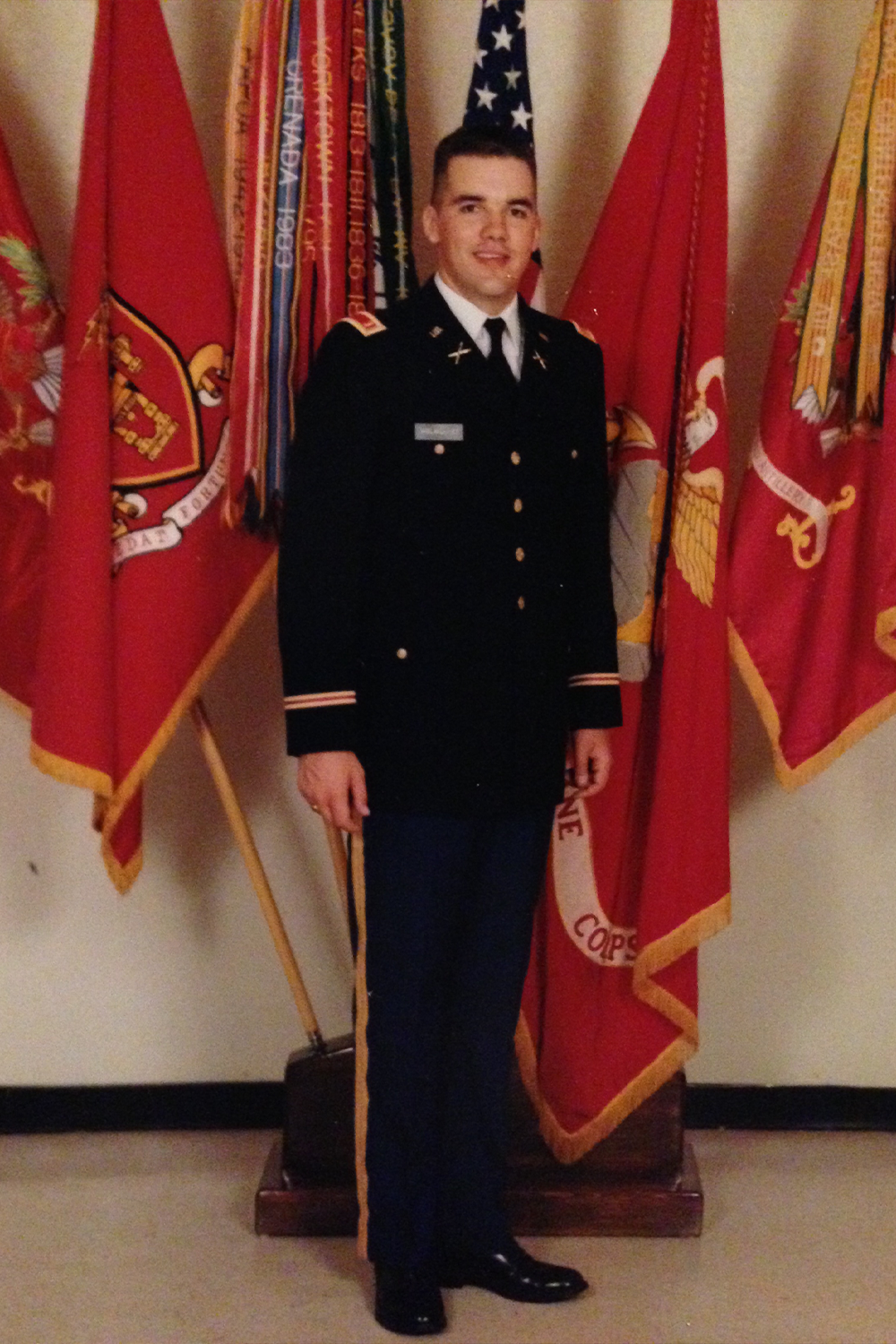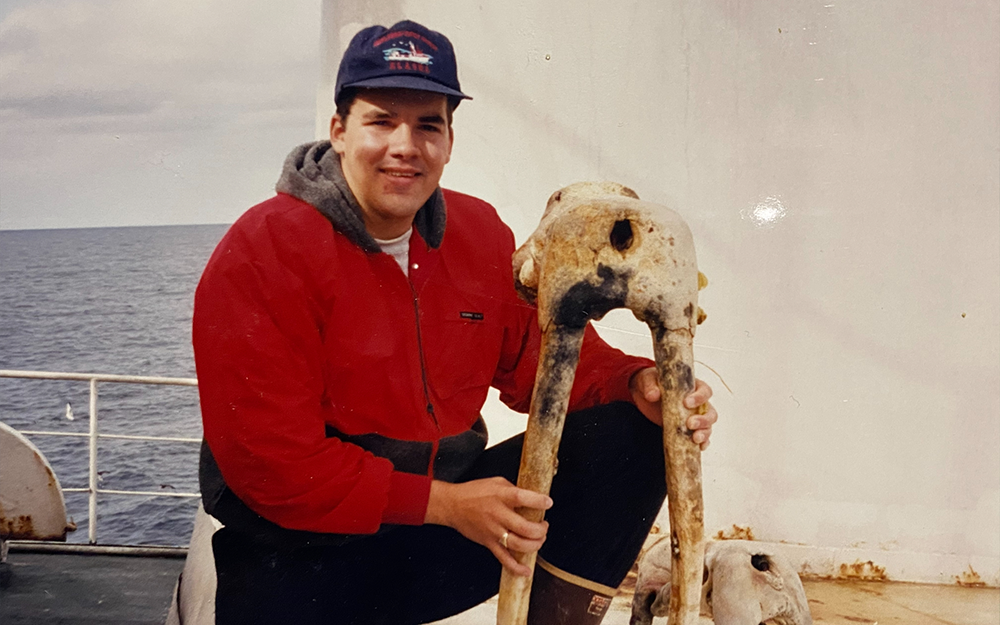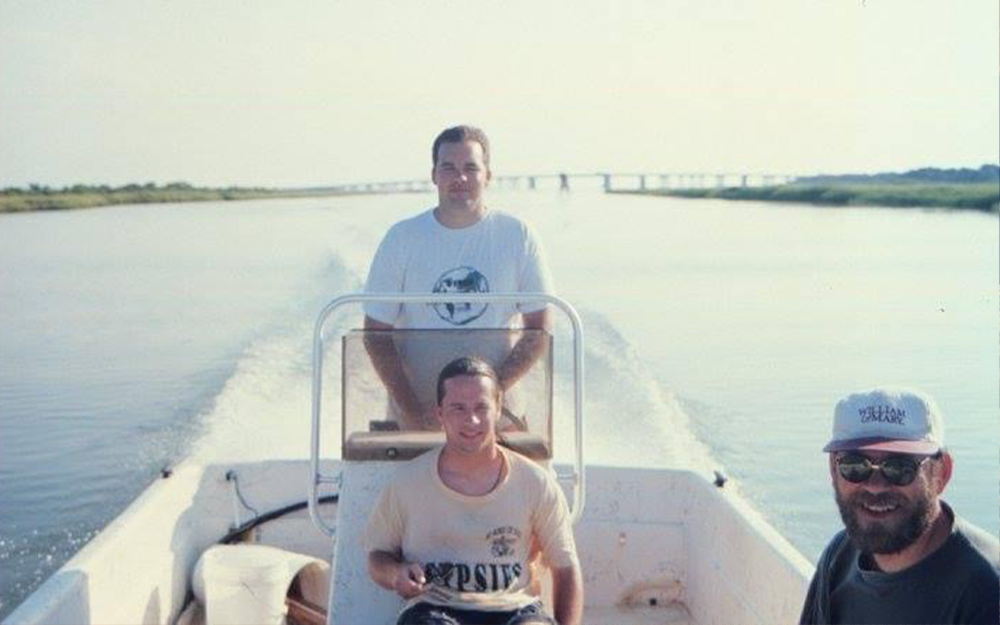From crustacean surveys to satellite surveillance
Richard Holmquist M.S. ’01 reflects on a path that started at W&M’s Batten School & VIMS and led to work in satellite-based geospatial analytics
 When Richard Holmquist arrived at William & Mary’s Batten School & VIMS, he wasn’t just looking to earn a graduate degree—he was in pursuit of a fresh start. After earning a bachelor’s in biology and history from W&M, being commissioned as an Army Reserve Officer and traversing the Bering Sea and Gulf of Alaska as a fisheries observer, Holmquist returned to Virginia determined to turn a budding interest in marine science into a career.
When Richard Holmquist arrived at William & Mary’s Batten School & VIMS, he wasn’t just looking to earn a graduate degree—he was in pursuit of a fresh start. After earning a bachelor’s in biology and history from W&M, being commissioned as an Army Reserve Officer and traversing the Bering Sea and Gulf of Alaska as a fisheries observer, Holmquist returned to Virginia determined to turn a budding interest in marine science into a career.
“My plan was to head back to William & Mary and work at VIMS on a part-time basis in the crustaceology department on the winter blue crab dredge survey, while taking one or two classes,” said Holmquist.
The plan worked, and he soon found himself in the master's program at the Batten School of Coastal & Marine Sciences & VIMS, with support from Herb Austin in the fisheries department who provided Holmquist with an assistantship working on the Juvenile Striped Bass Seine Survey. What began as part-time fieldwork ultimately launched a career in satellite remote sensing, maritime surveillance and geographic intelligence, culminating in Holmquist’s current role as director of Americas sales for HawkEye 360.
 A unique community leaves its mark
A unique community leaves its mark
The camaraderie at the Batten School & VIMS left a lasting impression on Holmquist. “It was fantastic,” he said. “We were all so close. The Halloween parties, the happy hours, the pig roasts, the field work, getting assistance from your colleagues and then you giving support to them… Even today, everybody has spread all around the country and some around the world, but every time we see each other, it’s like no time has passed.”
Among the most memorable experiences was the fieldwork itself. “In the seine survey, we would drive privateers all around the Eastern Shore, on the ocean and the bay side, pulling seines in remote areas along the beaches on both sides. So that was a lot of fun,” he said.
Holmquist also fondly recalled participating in the Roanoke Roundup, an annual field trip led by Professor Jack Musick to western Virginia to study fish evolution in Appalachian rivers, “which was always a big hit,” he said. “What Jack did so effectively was give you an idea of the diversity of endemic fish to the eastern United States; it was fascinating.”
Austin, Holmquist’s advisor, was another mentor with indelible influence. “He’s a thoughtful and curious guy; academic, but also very practical,” said Holmquist. “And if you were one of his students, he required that you include in your thesis at least a couple of recipes for the fish that you were studying. I was studying Atlantic silversides, so I had to be creative and adapt some smelt recipes. My thesis will never be used as a culinary reference,” he laughed, “but I met the objective.”
Beyond fieldwork and faculty, Holmquist credits his time at the Batten School & VIMS with directing his career toward geographic information systems (GIS). “I had to get assistance from technicians at VIMS to produce maps for my thesis,” he said. “As I was finishing up my thesis, I thought, ‘If I had to do it all over again, I’d focus more on this geospatial software; it’s such a powerful tool.’ And now my whole career has been GIS.”
 Studying the ocean, from the sky
Studying the ocean, from the sky
As he was wrapping up his master’s thesis and planning to pursue a doctorate, Holmquist was sent to Sarajevo, Bosnia in command of a Virginia Army National Guard unit to support a peacekeeping mission. “We had a very successful tour,” Holmquist said, “but it blew up my Ph.D. plans and led to my satellite remote sensing job at ORBIMAGE.”
Holmquist spent 17 years with the company, which was acquired and renamed several times until becoming Maxar. “The product evolved from a fish-finding service to a fisheries enforcement tool and maritime domain awareness for government applications,” he said. “I got my start making the maps and then moved into sales. It was a sacrifice, because I gave up being a scientist to become a salesman, but I was good at explaining to fishermen why and how the product worked. That came from the VIMS’ program, because there’s a legacy of communication, not just to academics, but also to the general public.”
Today, Holmquist works for HawkEye 360, a company that detects and geolocates radio frequency signals using a constellation of 30 satellites. “In the maritime world, that may mean detecting dark ships at sea or detecting nefarious activity, whether that’s illegal fishing or drug smuggling or military activity. There are a lot of terrestrial applications, too.”
That range of capabilities attracts an equally diverse clientele to the company. “Most of our business is defense and intelligence agencies of one flavor or another, but we also serve fisheries,” said Holmquist. “One of my bigger clients is the Canadian Department of Fisheries and Oceans, who are looking for illegal fishing activity.”
 A lifelong alma mater connection
A lifelong alma mater connection
Holmquist has remained connected to the Batten School & VIMS through both return visits and philanthropic gifts. “I keep up with a lot of my classmates and cohort folks, and I get back to campus occasionally. I've seen the tremendous capital improvements that have been made on the campus since I left. It's amazing to see the whole campus transformed,” he said. “I make my contribution to the VIMS Impact Fund every year, because I’m excited about how new programs and new investments will continue to support the students, as well as the science — but my heart is really with the students.”
Looking back, Holmquist encourages students to savor their time at VIMS. “Take photos. Appreciate the short time that you have there and take advantage of it. It's rare to have those kinds of resources available to you, both in terms of the brain power that's there and also the facilities and tools. It's a unique opportunity; don't waste it.”
To graduates entering the workforce, his advice is similarly candid: “Don’t be hesitant to jump at opportunities when they come around. For me, the satellite industry was a really risky business to get involved in. A risk can be a big win if it’s successful, and if not, you’re still young. So don’t be afraid! Over time you’re going to find something that you enjoy. And,” Holmquist said, “if you're a VIMS student who graduated from the program, you're a smart person, so don't settle for something you don't want to do.”
This alumni profile was published in August, 2025.

